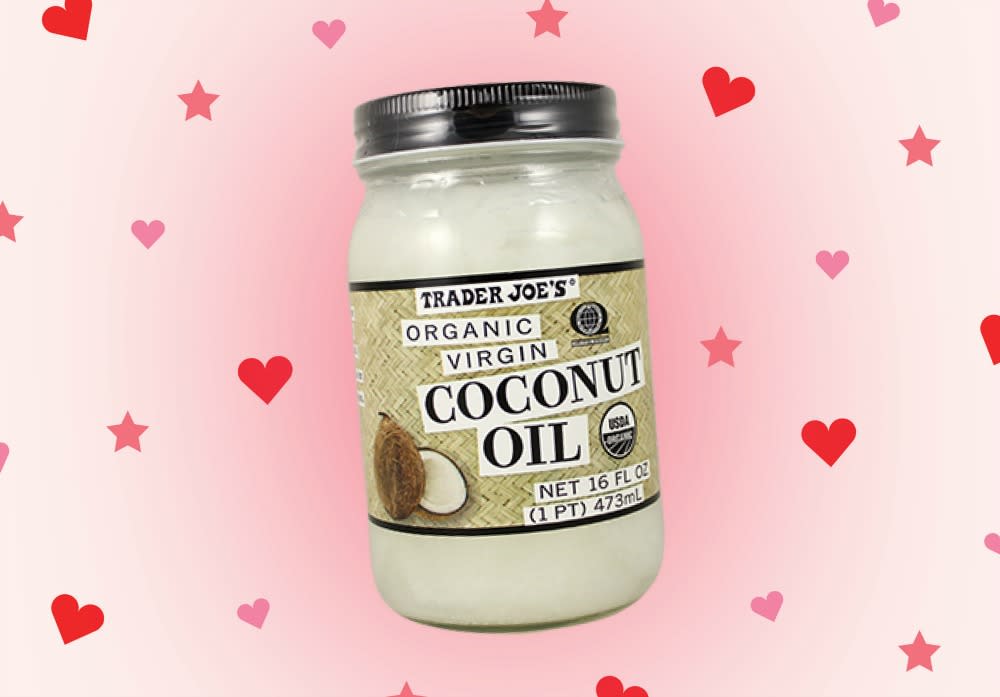Here’s what you need to know about oil pulling, and why everyone’s doing it
The practice of oil pulling has been around for approximately 3,000 years, but it’s seen a recent surge in popularity — a common occurrence when celebs share their routines with us on social media. If you’re unfamiliar with the term “oil pulling,” just know that there isn’t exactly any “pulling” going on — and it’s definitely not anything painful. This home remedy therapy really is one that’s easy to try at home, and the act of oil pulling itself is pretty simple.
“It involves swishing approximately 1 tablespoon of oil — typically coconut, sesame, or sunflower oil — in your mouth for about 20 minutes and then spitting it out,” explains Jessica T. Emery, DMD.
Yes, she said 20 minutes — not 20 seconds. If done daily, oil pulling will supposedly get rid of the bacteria caught between your teeth.
If swishing oil in your mouth simply to get rid of the bacteria between your teeth sounds like your idea of personal hell, don’t run in the other direction just yet — after all, oil pulling must be popular for a reason, right? If you’re thinking of adding it to your routine, here’s what you need to know about the home remedy therapy.
The type of oil you use is super important.
When you decide to give oil pulling a go, don’t just grab any oil from your kitchen cabinet. It’s essential to use organic, high quality oil — otherwise the practice could have a negative effect on your dental health. A Harvard Medical School study found that harmful levels of lead, mercury, or arsenic were present in herbal oil products that people had purchased in Boston grocery stores for oil pulling.
So, splurge and use a high-quality, safe oil — coconut oil is a popular choice because it contains anti-bacterial, anti-fungal, and anti-inflammatory properties. Cold-pressed organic sesame oil, olive oil, or sunflower oil are also effective, safe options.
Do it in the morning.
The best time to oil pull is in the morning, before you’ve had anything to eat or drink, because this is when the most harmful germs and bacteria are present in your mouth. I know, I know — 20 minutes of swishing oil in your mouth before you’ve had your morning coffee doesn’t sound especially appealing. Luckily, you can multi-task while you oil pull — some people choose to do it in the shower or while they watch the morning news. That way, it doesn’t tack on 20 minutes to your morning routine. If 20 minutes feels insurmountable, you can divide it up into two 10-minute sessions per day.
It doesn’t replace brushing and flossing.
You’re dedicating all this time to oral health, so don’t let the basics of brushing and flossing fall by the wayside. Dentists and researchers haven’t found hard evidence that indicates oil pulling is the miracle therapy many tout it as — so the American Dental Association emphasizes that it should absolutely not replace the recommended daily routine of brushing twice and flossing once.
Don’t ignore the science.
Although certain studies have found that oil pulling effectively removes plaque and bacteria, the ADA maintains that the current research isn’t strong enough to prove that it reduces the risk of cavities, whitens the teeth, or improves overall oral health. It’s still perfectly safe to practice (provided you use high quality oils) and there’s no indication that there are negative side effects. The only time oil pulling is bad for your oral health is when it’s used as a substitute for good old brushing and flossing.
If you don’t mind swishing coconut oil in your mouth while you watch your favorite show on Netflix, oil pulling is certainly worth a try — just make sure you spring for the organic oil, and definitely don’t get rid of your trusty toothbrush and dental floss just yet.



